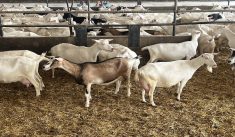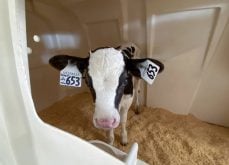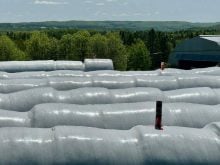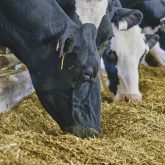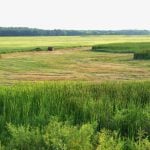Ease of cattle movement in and out of a hoof-trimming apparatus is becoming more of a focus for the chute manufacturers.
Several hoof-trimming chute makers showed off their equipment at the hoof trimming demonstration at the Canadian Dairy Xpo, held April 2 and 3, 2025 in Stratford.
Why it matters: Animal welfare is a big concern for many consumers so being able to show that hoof trimming can be done stress-free could help boost the positive image of dairy farmers.
Read Also
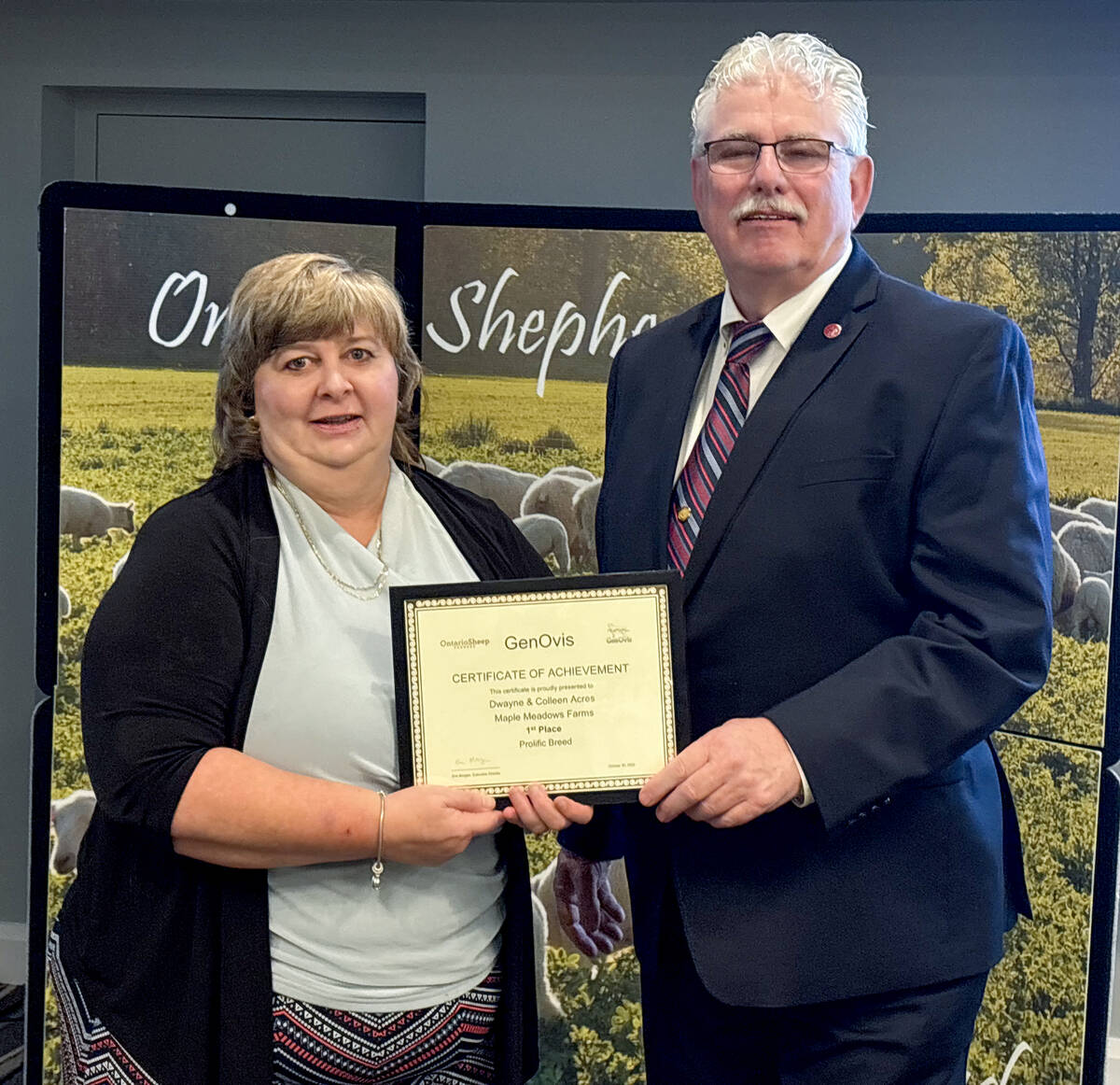
GenOvis awards presented at Ontario Sheep Farmers’ annual meeting
Producers and youth were recognized for their contributions during the Ontario Sheep Farmers’ annual GenOvis and leadership awards.
Efficient cattle movement is important because farmers want a stress-free environment for the cows, but it’s also because on hoof-trimming day, they want to ensure they’re getting the best bang for their bucks by maximizing the time that a cow is in the chute having its hooves trimmed.
With the man behind the “Don’t Tell the Bishop” Amish-inspired comedy videos sometimes serving as a stand-in bovine, six companies went through the operations of their trimming chutes.
“It was a great idea for the XPO to put six different hoof chutes side by side for people to compare at this year’s show,” said Koos Vis of Diamond Hoof Care. The Alberta-based company, which markets hoof care tools as well as antibiotic-free treatments for digital dermatitis and other common bovine hoof ailments, sponsored the sessions.
Appleton Steel sales manager Bryant Hess displayed one of the Wisconsin-based company’s high-end chutes with fully remote-control operation of the entry and exit gates, belly straps, hydraulic lift and additional rear crowding gate to push the cow forward in the chute.
“We’re trying to create as natural a cow flow as you can possibly get while putting a cow into a machine,” Hess said, adding that the unit’s designers aimed to take advantage of the animals’ natural instincts to follow the cow in front as well as move forward when they feel pressure from the cow behind.
Randall Martin of Bluevale, Ont., whose family’s involvement in hoof-trimming began when his father took up the trade in 1982, now operates Fineline Hoof Care. When he decided to design his own chute and handling system, he contacted noted U.S.-based animal handling expert Temple Grandin to share knowledge about cow movements during hoof care sessions. Out of this collaboration came a system of curved gates through which Martin observes cattle move without stress.
“You hardly need any inducement with this system at all for the cows to enter the chute,” Martin said, adding the time between cows in the Fineline Hoof Care unit is typically only five-10 seconds.
Jamie Sullivan, who grew up in Ontario working on dairy farms but later relocated to Manitoba, described how he eventually settled on a line of hoof trimming chutes manufactured in Spain for his Rippleview Hoof Care business.
“You can see that the guys who built this trim a lot of cows,” he said, calling the unit “the quietest chute on the market.”
For Sullivan, who is well-known in Manitoba cattle circles due to his many training workshops, ergonomics for the hoof trimmer is as important as the comfort and safety of the cow. And he believes the Spanish-made chutes score well on all counts.
For his own units, he added a computer and hoof-care software so he can record what treatments are done to each cow. Then when he returns to the farm in the future he can look back and know exactly when she was treated in the past and for which ailments.
Farmers have the option to tie this data into their herd management software. It’s something Sullivan believes all dairy farmers should consider adding.
“If your trimmer doesn’t have a computer program for recording what’s done, you should ask why they don’t have one,” he said.
Another Ontario-made option on display was an upper-range model from Jake’s Welding near Norwich. With fully hydraulic controls, side doors so the farmer can access the cow’s body if they have other treatments to give while she’s in the chute, and electrical outlets on either side of the unit to plug in grinders for the hooves, the cost is about $32,500.
But Jake’s Welding also offers a basic model for under $10,000.
Sullivan believes every dairy farm should have some kind of trimming chute, even if it’s a lower-end model with manual gates. That way, if a cow shows up lame, but the regular hoof trimmer isn’t scheduled to come for a couple of weeks, the farmer can take immediate action.
Check out the rest of our coverage fo the Canadian Dairy Xpo here.






